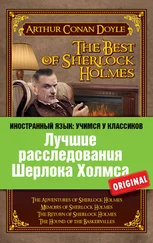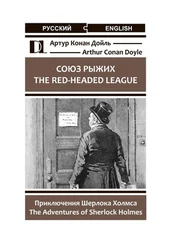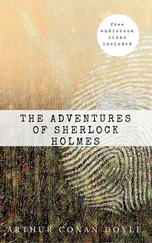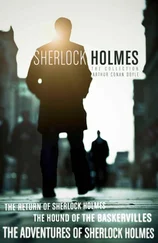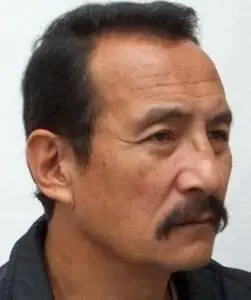
***

[1] Kipling expanded and incorporated this account in his novel Kim, published in 1901.
[2] Herbert Spencer, 1820-1903. Once immensely influential and internationally popular Victorian thinker, formulator of the 'Synthetic Philosophy' that sought to apply scientific, especially evolutionary theory not only to biology but to psychology, sociology, anthropology, education and politics.
[3] By a happy coincidence Watson ends his account of Holmes's death at Reichenbach (The Final Problem), with a similar sentence. Probably Watson and Mookerjee were both unconsciously recalling the lines of another, more ancient, biographer on the death of his celebrated friend and mentor. Plato in the Phaedo wrote: 'Such was the end, Echecrates, of my friend, concerning whom I can truly say that of all the men whom I have ever known, he was the wisest and justest and the best.'
[4] Milton, Paradise Lost.
[5] Kipling's indiscretions regarding the Indian Secret Service do not seem to have been confined to just the affair concerning 'The Pedigree of the White Stallion. Kipling readers will know that Strickland and his undercover activities are mentioned not only in Kim but in a number of short stories as well. Strickland is depicted as a proficient investigator, though certainly less cerebral than Holmes. He is a master of disguise and possesses a wide knowledge of native Indian customs and folklore, especially the more arcane and shady kind.
[6] For a fuller account of Strickland's problem, see Kipling's short story 'Miss Yougal's Sais ' in Plain Tales from the Hills.
[7] Probably the Reuter's despatch that appeared in all English papers on 7 May 1881, mentioned by Dr Watson in The Empty House.
[8] A near identical thumb-nail biography of Prof. Moriarty is provided by Holmes to Dr Watson in The Final Problem and The Valley of Fear.
[9] One of Dr Watson's less celebrated gaffes as a reporter is cleared up here. In The Empty House Watson records Holmes as crediting his defeat of Moriarty to his knowledge of… 'baritsu or the Japanese system of wrestling…' In point of fact the word baritsu does not exist in the Japanese language. The actual term used by Holmes and cor-recdy reported by Hurree is bujitsu, the generic Japanese word for the martial arts, which includes the Japanese system of wrestling {jujitsu) in addition to fencing, archery, etc. The Japanese statesman-scholar, Count Makino, also offered a similar explanation to account for Watson's error, in a paper read at the founding meeting of the Baritsu chapter of the Baker Street Irregulars in Tokyo, on 12 October 1948. (See Foreign Devil: Thirty Years of Reporting in the Far East, Richard Hughes, Andre Deutsch, Great Britain, 1972.)
[10] Very similar to a sacrifice throw in Judo called Tomoe-nage.
[11] This was his brother Mycroft, as Sherlock Holmes was to later inform Dr Watson when he returned to London (see The Empty House). Holmes had also previously confided to Watson, though in a somewhat roundabout way, that Mycroft was actually the chief of British Intelligence. In The Greek Interpreter Holmes remarks that Mycroft occupied 'some small office under the British Government' though he was in truth 'the most indispensable man in the country.' In The Bruce Partington Plans Sherlock Holmes further confides to Watson that Mycroft's unique governmental position was that of a 'central exchange for incoming data' and that 'Again and again his word has decided the national policy.'
[12] Holmes expresses a similar thought at the conclusion of The Adventure of the Cardboard Box.
[13] The only other reference I have uncovered on this unique plant is by Peter Goullart in Princes of the Black Boney John Murray, 1959. Goullart mentions: 'I was told by an eminent botanist that high up on the slope of Minya Konkka, shooting through the snow, grew a remarkable primrose, called Primula Glacialis, one of the rarest flowers in the world discovered by a Catholic priest. It rivalled the sky in the purity of its blue colour and delicacy of its contours… Why did the most beautiful, most enchanting and delicate blossoms on the planet grow so high and under such impossibly hard conditions, braving frost, hail, landslides and cruel winds, out of reach of humanity?'
[14] Sir Joseph Dalton Hooker travelled throughout India (1848-50) particularly the Sikkim Himalayas, to study the distribution and evolution of plants. He was one of the most eminent of nineteenth century scientists and a close confidant of Darwin.
[15] Sherlock Holmes makes very similar statements in The Final Problem and the case preceding it, The Naval Treaty. It is interesting that the metaphysical strain in him should surface so conspicuously on these two occasions just before his finalencounter with Professor Moriarty – surely the most deadly, yet significant, moment in his life.
[16] Could this have any connection with 'the repulsive story of the red leech' that Dr Watson mentions in his introduction to the adventure of The Golden Pince-nez
[17] Alphonse Bertillon (1853-1914), the great French detective, was the father of the revolutionary system of classifying and trapping criminals by measuring and recording certain unchangeable parts of the human body. He called his invention 'anthropometry’ or body measurement.
[18] In 1896, in the district of Hooghly in Bengal, the Inspector General of Police introduced, for the first time anywhere in the world, the system of fingerprinting for identifying criminals. Only in 1901 did Scotland Yard adopt the Henry system of classifying prints by patterns and shapes.
[19] In spite of its seeming novelty, the air-rifle had been in use earlier in history. Louis XIV hunted deer with one. It even saw military service when the French used it quite successfully against the Austrians in the Napoleonic Wars. An air-rifle was also used by Lewis and Clark on their celebrated expedition.
[20] Intermediate. One of the many classes on Indian trains in the past. Between third and second class.
[21] The Brahmo Somaj or Divine Society was founded in 1828 by Raja Ram Mohan Roy, the great Indian reformer and doyen of the Bengal Renaissance. He took his stand on the principles of reason and the rights of the individual as expressed in the Upanishads. These he said were basic to both Hindu and Western thought and formed a basis upon which they could mutually borrow. He attacked the institution of sati and abuses of caste, advocating the raising of the status of women and the abolition of idolatry.
[22] Probably
[23] The monastery of Tashi-lhunpo, the seat of the Panchen Lamas. Early European travellers to Tibet and writers mistakenly referred to the Panchen Lama as the Teshoo' lama or the 'Tashi' lama, after the monastery.
[24] In 1860 an Anglo-French expedition led by Lord Elgin occupied Peking after defeating Imperial Chinese forces and forcing the Emperor to flee to Jehol. Every palace, temple and mansion in the capital was thoroughly plundered, and the Imperial Summer Palace burned to the ground. The occasion that provoked this war was the 'Arrow' incident of 1856, when a Chinese-owned but Hong Kong-registered ship, the Arrow, was forcefully boarded by Chinese police at Canton for the alleged purpose of searching out a notorious pirate. Incidentally, Elgin is buried in an old church yard at Dharamsala, the present headquarters of the Dalai Lama in northern India.
[25] This annual trade caravan was also a tribute envoy to the Grand Lama from the king of Ladakh. Known as the Lopchag (annual prostration) mission it was established in the seventeenth century at the end of the Ladakh-Tibet-Mongol War. See'The Lapchak Missionfrom Ladakh to Lhasa in British Indian Foreign Policy,' John Bray, The Tibet Journal, Vol. XV No. 4.
Читать дальше




